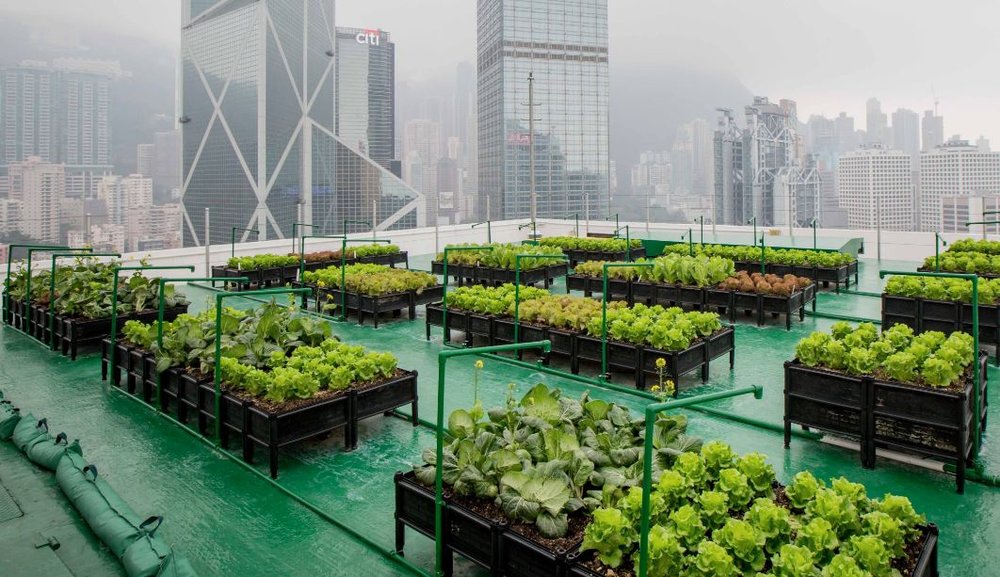5 Easy Facts About City Blooming Described
5 Easy Facts About City Blooming Described
Blog Article
The Ultimate Guide To City Blooming
Table of ContentsCity Blooming for DummiesThings about City BloomingThe Facts About City Blooming RevealedLittle Known Questions About City Blooming.City Blooming for Dummies
Interested in growing food for sale in the City of Chicago? Below is a listing of frequently asked inquiries concerning the guidelines and laws that growers should take into consideration when preparing a city farming job.
The zoning change does not customize any kind of various other codes taking care of composting, building licenses, purchasing or renting City owned home, company licenses or environmental contamination. There are existing codes that manage these concerns and they stay in complete effect and may be relevant to your project. Area yards are usually had or taken care of by public entities, civic companies or community-based organizations and maintained by volunteers.
Urban farms expand food that is meant to be offered, either on a not-for-profit or for-profit basis. Due to their commercial objective, city ranches require a service certificate.
Examine This Report on City Blooming
The quantity of garden compost material can not exceed 25 cubic backyards at any type of provided time according to the requirements in 7-28-715 of the City's Municipal Code. Since the soil at most new garden sites requires modifying, garden compost, dirt, timber chips, or other products can be obtained to build or enhance the expanding space.

If a structure permit is needed then the hoophouse will be considered an accessory building. You can figure out more about the structure authorization demands by calling the Department of Structures. The 25,000-square-foot size limitation is planned to stop a solitary community garden from controling a given block or detracting from the block's existing residential or industrial character.
The limit does not use to yards situated in Public Open Space (POS) areas. Can there be even more than one neighborhood yard that is 25,000 square feet on a single block? Yes. The dimension restriction applies to private yards, not to individual blocks. No. Fencing is not required, nonetheless, gardens that have huge auto parking areas may be called for to mount secure fencing or various other landscape design attributes.
The Greatest Guide To City Blooming
B1 & B2 areas require that all commercial use tasks be conducted inside your home. Is secure fencing needed for urban farms? Fencings might be called for, along with landscaping and screening, for certain car park areas and outdoor job or storage space areas depending on place and the specific activity taking place.
Urban ranches need building licenses and zoning authorizations prior to construction (City gardening). Other kinds of city evaluation might be required depending on details frameworks, tasks, dimension, landscape design, licensing, public heath and stormwater monitoring issues.
The Division of Company Affairs and Customer Protection can help figure out the specific kind of organization certificate that's needed. Off road auto parking is needed for the majority of commercial tasks in Chicago. The required number of car park rooms is based on the number of employees working on website and not the square footage of the expanding area.
The Only Guide to City Blooming

A metropolitan farm can market garden compost product created on website, however, the operation must conform with the laws in 7-28-715 of the Chicago Municipal Code. Aquaponic systems are enabled inside on city ranches in numerous zoning areas.
Up to 5 hives or swarms of honey bees may be kept as an accessory usage. However, beekeepers need to register with the Illinois Department of Farming. For more information regarding the suggested zoning change you might contact the Division of Real Estate and Economic Development, Bureau of Planning and Zoning at 312.744.8563.
Farming in cities and urban areas A city ranch in Chicago. Urban farming describes different techniques of growing. https://yoomark.com/content/home-city-blooming, handling, and distributing food in metropolitan locations. The term additionally uses to the location tasks of animal husbandry, aquaculture, beekeeping, and cultivation in a city context. Urban farming is differentiated from peri-urban agriculture, which takes area in backwoods at the edge of suburbs.
The Facts About City Blooming Uncovered
, that look for to create social networks started on a common values of nature and community holism. These networks can develop by means of official institutional support, becoming integrated into local town planning as a "shift town" movement for lasting metropolitan advancement.
The much more straight access to fresh veggie, fruit, and meat products that might be know via metropolitan agriculture can improve food safety and food safety and security while reducing food miles, why not check here causing reduced greenhouse gas discharges, therefore contributing to environment modification reduction. A few of the initial proof of urban agriculture originates from Mesopotamia.
Report this page